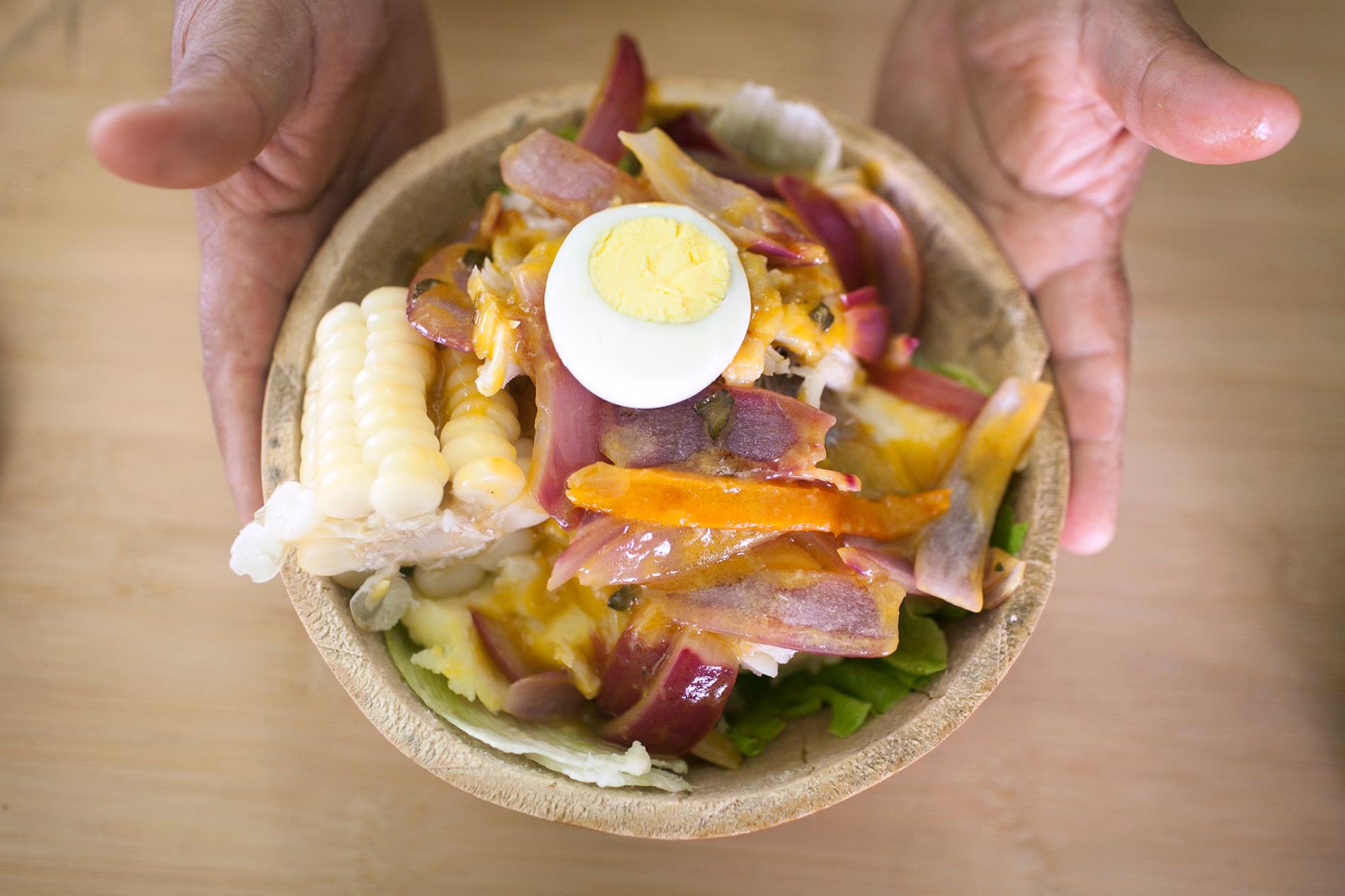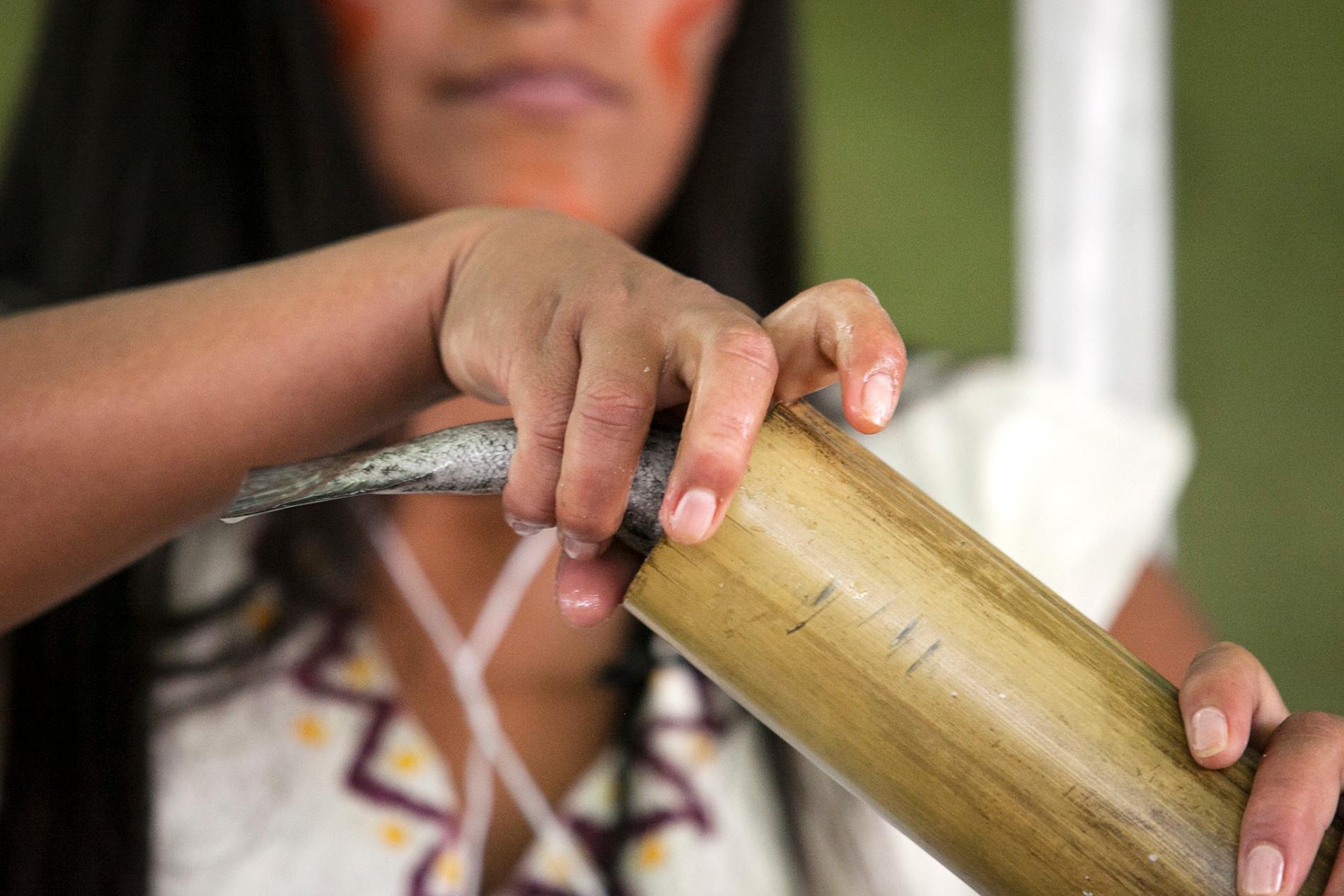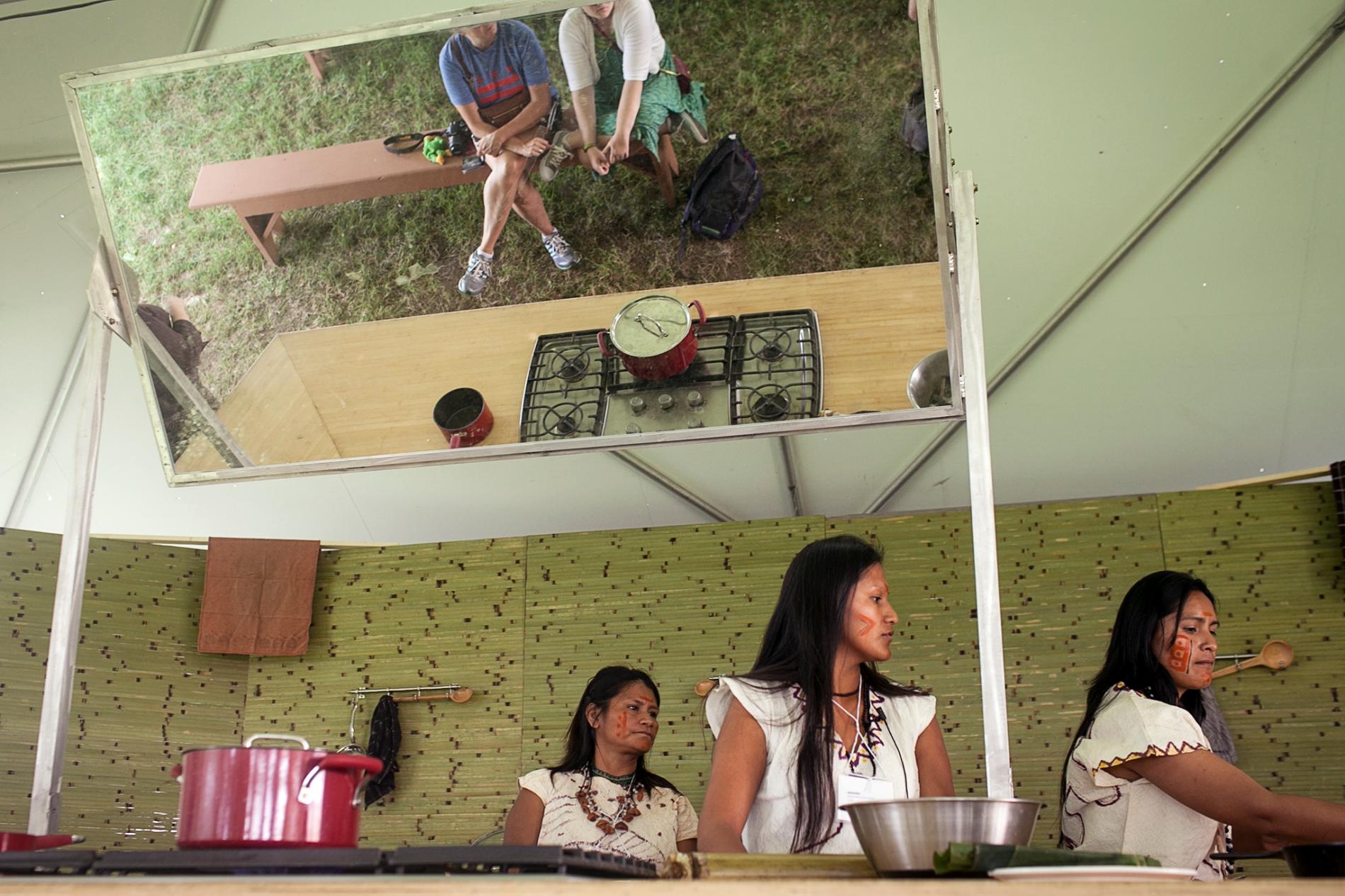
Causa en Lapa is a traditional north Peruvian dish containing fish, corn, potatoes, peppers, and a hardboiled egg.
THERE’S MORE TO Peru than Machu Picchu, and there’s much more to Peruvian cuisine than just ceviche and Pisco.
The Smithsonian Folklife Festival, held this year from June 24-28 and July 1-5 in Washington, D.C., introduces visitors to more authentic aspects of Peruvian culture, such as Chinchero weaving techniques, the national Marinera dance, and regional recipes that go beyond our one-dimensional perceptions. And you don’t even need a plane ticket if you live nearby.
In a country where the landscape fluctuates between beaches, mountains, and rain forests, it’s no surprise that Peruvian food can’t be explained in just one dish. Here are three specialties featured at the festival that are guaranteed to expand your culinary Peruvian palate—and yes, we’ll forgive you if wash them down with Pisco Sours.
Causa en Lapa
In the town of Huanchaco on the northern Peruvian coast, locals catch this entree’s staple—bacalao—on the same type of handcrafted reed rafts they used 5,000 years ago. Cooked in a clay pot, the cod-like fish complements Papa Maria potatoes—one of the country’s 2,000 potato varieties—which are pureed with the seafood broth instead of butter and milk. Corn and a hardboiled egg, along with a mixture of lemon, onions, vinegar, and peppers, top the dish, traditionally served in a dried gourd.

Pacamoto, a native Peruvian dish made with fish stuffed in a bamboo pole and cooked over fire.
Pacamoto
The Wachiperi community in the Peruvian Amazon keep the ingredients for their special occasion pacamoto recipe simple: fish, bamboo, and banana leaves. The real skills lie in the preparation. After the bocachico fish crosses paths with a bow and arrow, it’s salted and stuffed into a ripe, green bamboo stalk. A banana leaf plugs the stalk’s opening, while the log roasts over an open flame. A machete, or an extra sharp kitchen knife, then cracks the well-done bamboo in half to free the fish—served on a banana leaf with boiled yucca and heart of palm.

Peruvian women demonstrate native dishes in a kitchen on the National Mall in Washington, D.C. during the Smithsonian Folklife Festival 2015, while onlookers are reflected in a mirror above them.
Lucuma and Cherimoya Gelato
Gelato might not be the most obvious choice when it comes to Peruvian cuisine, but the country’s Superfruits seem to have been cultivated with ice cream in mind. The lucuma, which looks like a cousin of the avocado when sliced in half, tastes like a combination of pumpkin and sweet potato—a nutty flavor you’d expect to see Starbucks introduce in its next line of fall lattes. Or try the tart cherimoya flavor, crowned “the most delicious fruit known to men” by Mark Twain. Both flavors are available at the festival, or year-round at Firenzes Gelateria & Cafe in Annapolis, Maryland, and probably at Machu Picchu.

